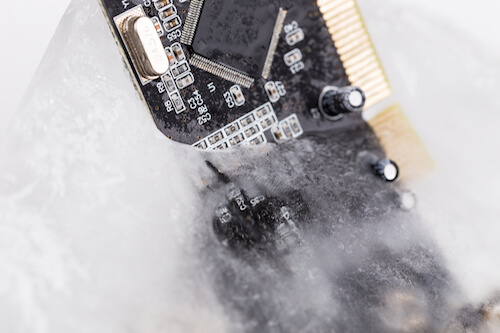You may already be all too aware of the fact that there are a number of forces working against your in-house phone system’s long term survival.
Even if your traditional system is working fine today, it’s worth carving out some time to plan your next steps after your in-house business phone system reaches its eventual end of life.
Otherwise, you could end up in a costly crunch when your phone system experiences an untimely demise.
Below are some of the factors that could seriously impair an older phone system or even stop it in its tracks—whether the brand is Inter-Tel, Panasonic, Comdial, Executone, Isoetec, Inter-Tel, Premier, Iwatsu ADIX, NEC, Nortel Norstar, Toshiba, Vodavi or another manufacturer.
Traditional business phone lines will go away
It makes less and less economic sense for phone companies to continue to support POTS (plain old telephone service) lines and PRI circuits. These are the copper wire circuits associated with older in-house phone systems.
Eventually, the types of phone lines that are the only connection option for older on-premises phone systems will go away.
And, what does a business like a telecom company do when it wants to discourage the use of a service? It increases the price.
So, even while traditional phone lines remain in existence, they may start to cost more.
A limited supply of phone system replacement parts
Many companies are using phone systems with components that vendors stopped producing and selling years ago.
Phones, cards, power supplies often need to be purchased from refurb shops or from eBay. One refurb shop even offers “hard to find parts.” This suggests that old phone system parts can be, well, hard to find.
However, once those shops run out of inventory, that’s it. A broken phone system can become a non-serviceable system.
Finite expandability within your controlling hardware
Legacy phone systems have a physical limitation as to how many phone lines and stations (telephones) they can support. For example you may have an “8 by 16” phone system that supports a maximum of 8 telephone lines and 16 stations.
Ironically, Vodavi had a system called Infinite that maxed out at 12 phone lines and 24 stations.
The reality is, old in-house phone systems have finite elasticity.
What happens when the rubber band is fully stretched, but you need a 25th phone? Well, you could purchase an entire used system from eBay or from a refurb shop.

Or you could look toward an elastic and evergreen future…
A frozen feature set
Accompanying a halt in production, many older phone systems have long since stopped getting feature upgrades from manufacturers. We alliteratively refer to this as “features that are frozen in firmware.”

While a outdated feature set is not a show-stopper, it can be a deterrent to business productivity.
The hassle of a business relocation
At some point, you may end up moving your business to a new location.
First, moving an in-house phone system can be costly.
Second, we have heard about instances in which the old phone system did not survive the trip to the new building. It was plugged in at the new location, and… the red failure LEDs were blinking brightly.
Planning Ahead
Even if you’re not ready to move to a new phone system, we can help prepare you for the eventuality of a system replacement.
Contact us to discuss what to think about now for the day your business phone system decides to call it quits.
We can even look at your phone bills to find out if there are ways to save money in the interim.

